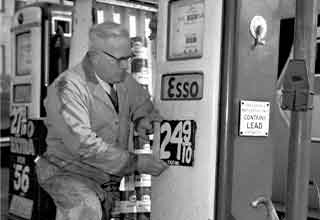My Proposal For A TurbineElectric Hybrid Car.
I'm going to copy some Wikipedia stuff first, then I'll go into my own ideas.
Chrysler Turbine Cars were automobiles powered by gas turbine engines that the Chrysler Corporation assembled in a small plant in Detroit, Michigan, USA in 1963, for use in the only consumer test of gas turbine-powered cars. It was the high point of Chrysler's decades-long project to build a practical turbine-powered car.
The fourth-generation Chrysler turbine engine ran at up to 60,000 rpm could use diesel fuel, unleaded gasoline, kerosene, JP-4 jet fuel, and even vegetable oil. The engine would run on virtually anything and the president of Mexico tested this theory by running one of the first cars--successfully--on tequila. Air/fuel adjustments were required to switch from one to another.
The engine had a fifth as many moving parts as a piston unit (60 rather than 300). The turbine was spinning on simple sleeve bearings for vibration-free running. Its simplicity offered the potential for long life, and because no combustion contaminants enter engine oil, no oil changes were considered necessary. The 1963 Turbine's engine generated 130 brake horsepower (97 kW) and an instant 425 pound-feet (576 N·m) of torque at stall speed, making it good for 0-60 mph in 12 seconds at an ambient temperature of 85 °F (29 °C) - it would sprint quicker if the air was cooler and denser.
The absence of a distributor and points, the solitary start-up spark plug and the lack of coolant eased maintenance, while the exhaust did not contain carbon monoxide (CO), unburned carbon, or raw hydrocarbons. Nevertheless, the turbine generated nitrogen oxides (NO) and the challenge of limiting them helped to kill the program.
Its power turbine was connected, without a torque converter, through a gear reduction unit to an otherwise ordinary TorqueFlite automatic transmission. The flow of the combustion gases between the gas generator and free power turbine provided the same functionality as a torque converter but without using a conventional liquid medium. Twin rotating recuperators transferred exhaust heat to the inlet air, greatly improving fuel economy. Varying stator blades prevented excessive top end speeds, and provided engine braking on deceleration. Throttle lag, high fuel consumption — 17 mpg (U.S.) (13.8 l/100 km) — and exhaust gas temperatures at idle plagued early models. Chrysler was able to remedy or mitigate most of these drawbacks and deficiencies.
Unfortunately, the turbine car had some operational drawbacks. The car sounded like a giant vacuum cleaner, which was not satisfying to consumers who were more comfortable with the sound of a large American V8. High altitudes also caused problems for the combined starter-generator. Failing to follow the correct start-up procedure could wreck the engine in seconds. However, troubles were remarkably few for such a bold experiment. More than 1.1 million test miles were accumulated by the 50 cars given to the public, and operational downtime stood at only 4%.
Ok I'm back. What I wanted to try and get out is that this type of engine would go great with an electric hybrid. I'm sure that new tech could make the engine lighter, and less noisy. Just like gas powered hybrids, the elecric motors would give the initial torque from a stopped position. This would solve any problems with throttle lag. Use the turbine engine to generate electrical power, and power the car at high speeds. Use the electric to comepensate for the weaknesses of the turbine. A car that can run off of most flamable liquids, and also have the benefits of an electric hybrid deserves some looking into.






0 Comments